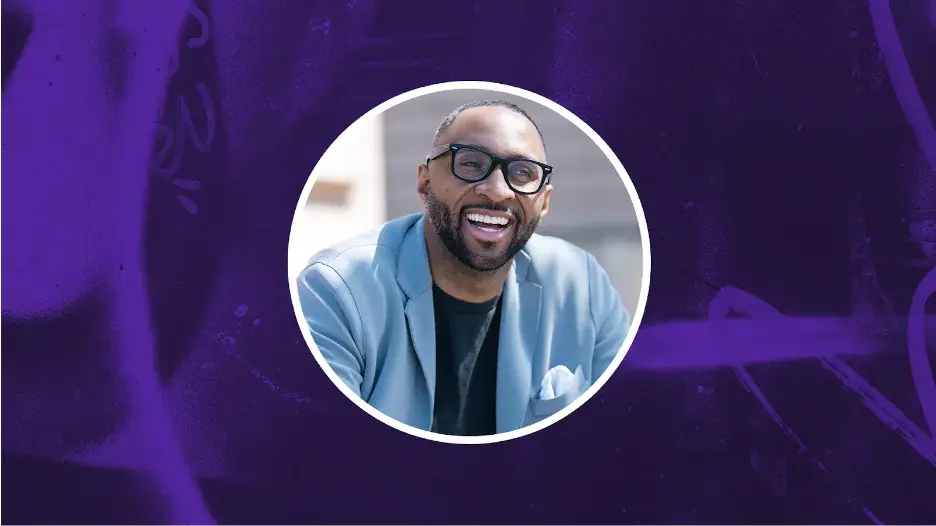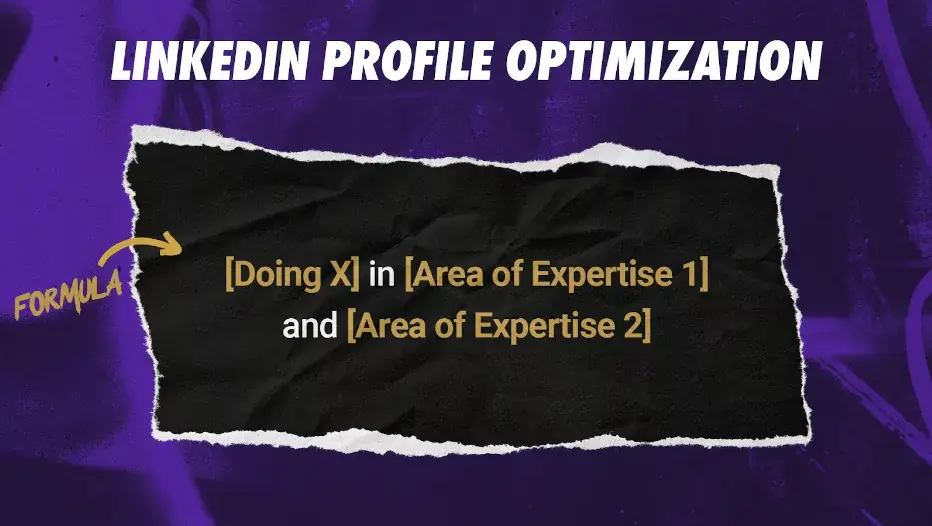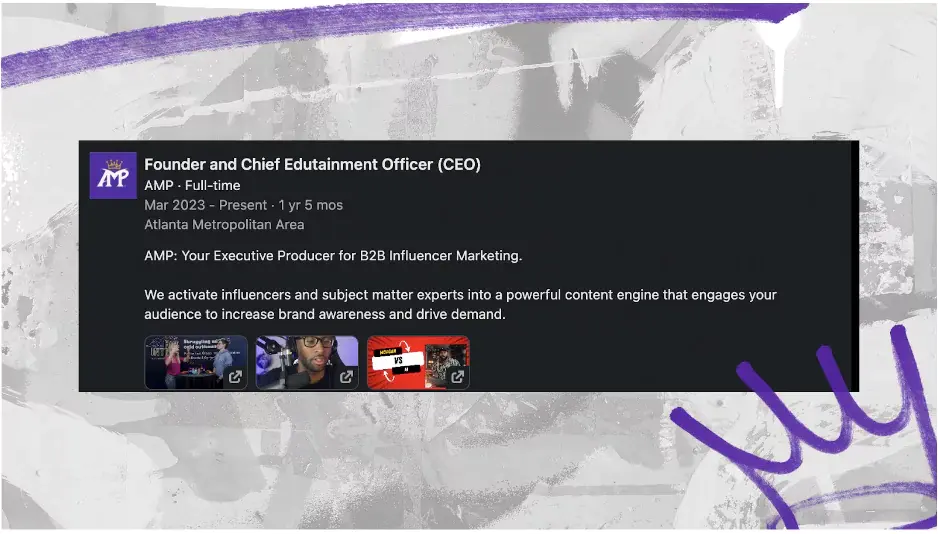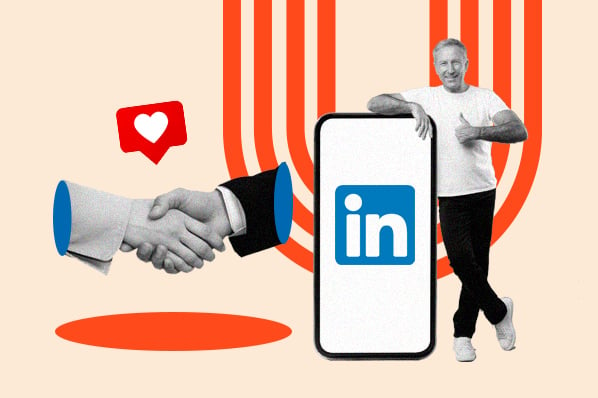Morgan J. Ingram's Tested, 10-Step Process for Nailing Prospecting on LinkedIn
Your LinkedIn profile is your first digital impression, and you don‘t want to waste your shot with a lackluster profile. A lot of prospects are going to visit your profile before they consider scheduling a meeting — that’s why you need to ensure your page is airtight and engaging.
Here are some steps on how to get there.
1. Start with a professional photo.
Use a clear, professional-looking photo that represents you well. I‘m no photographer, but I’ve sold enough on LinkedIn to know that your photo should convey approachability and professionalism. Ideally, your headshot should be well-lit, with a neutral background that doesn‘t distract from your face — so avoid casual photos where you’re in the dark.

2. Lead with a compelling headline.
Craft a headline that goes beyond your job title. I've never seen anyone book a meeting because they had AE or SDR in their title. Think about executives — exactly zero leaders have ever said, “Wow you have SDR in your title? I have to talk to you!” That's just not it.
Focus on what you can offer and how you can help potential connections.
For instance, instead of “AE at XYZ Corp,” try this instead:
“Helping Organizations Scale on WordPress”
This makes it clear what you bring to the table and how you can be a valuable connection.
Here's the formula I use:

3. Place some additional media in your job descriptions.
This one is way too slept on. Inside your job experience, you can click “Media” to add case studies, testimonials, and assets your potential client might find helpful. This helps bolster your credibility.
I would say add a minimum of three elements — that will give prospects a variety of options to choose from. The “Featured” section is another great place to highlight that kind of media, so consider leveraging that part of your profile as well.

Now, compelling and engaging as these tactics are, they can‘t do too much for you if you don’t understand your target audience. Successful LinkedIn prospecting starts with knowing who you’re trying to cater to — so be sure to cover the following steps to identify and thoughtfully approach your ideal buyer personas.
4. Pin down your ICP.
First things first, let's talk about the ideal customer profile (ICP). This helps you understand your most profitable customers and lifetime customers. When you do this exercise you want to consider industry, company size, roles, and geographic location if that's applicable.
For instance, you might discover your ICP is the IT director at a mid-sized tech company in the EMEA region. Focus on that ICP until you are completely tapped out. You don't want to prospect without direction — you need clarity so your messaging is on point.
5. Unpack your ICP's pain points.
Once we nail down the ICP we start to unpack their pain points. The best way to get this information is through your enablement team or simply by Googling the common challenges that this ICP faces. Most of the information is out there so it will be relatively easy to find. I would identify at least 10 of them to start. Don't go too wild here.
6. Craft a thoughtful value proposition that accommodates those pain points.
Lastly, we want to create thoughtful, targeted value propositions to keep our outreach relevant and non-spammy. Trust me, you don‘t want to be spam inside of someone’s LinkedIn inbox. Here’s the framework I use:
Problem + What You Offer + Use Case Within Industry = Value Proposition.
Keep things concise — showcase the value you offer and why someone should take the time to meet with you. You have to be convincing and to the point. After all, time is the most precious real estate in the world.
Once you have your value proposition, you need to thoughtfully engage your prospects. Engagement on LinkedIn helps you stand out. It’s not just about being seen but being remembered for the right reasons.
Here are two ways you can get there.
7. Engage your prospects by leaving active comments.
Leaving thoughtful comments on posts relevant to your industry or target audience is a game-changer. This showcases your confidence in your subject matter, and more importantly, it provides a relatively open space to engage with executives — those kinds of leaders generally don't get a ton of productive comments from well-informed salespeople.
I know, big shocker.
When you do this make sure you avoid generic comments like, “Great post!”
If you end up doing that, you didn't get that advice from me. Instead, offer insights or ask questions that add value to the discussion.
For example, say something like, “I found your take on digital transformation intriguing, especially the part about AI integration. How do you see smaller companies adopting this trend?”
Great question, that leads into a conversation.
8. Send connection requests (without a personalized note).
When sending connection requests, skip the personalized note. This is where people get upset with me, but I am only reporting the data. I ran a test with multiple responses, and surprisingly, a blank note often leads to higher acceptance rates.
However, if they don't accept your request without a note, withdraw it. You have to wait three weeks but you can follow up with a personalized message.
Now, we‘re at the fun part. Once you’ve connected, you can start conversations that lead to building a big fat pipeline.
9. Stand out with a voice note.
I highly recommend sending a voice note or video to stand out. Most people will shy away from this, but this is exactly why I suggest it. Executives receive few personalized videos, so take advantage of this. I talk to executives on a weekly basis, and they tell me they get 5-10 personalized videos a year.
You are reading that correctly.. 5-10 a year.
So why wouldn't you try this?
I previously discussed using the 10-30-10 for voice notes in my video article, but here’s a brief overview.
- 10-second intro
- 30-second value proposition
- 10-second call-to-action.
I have seen a 40% conversion rate using this approach.
Here is an example of what it sounds like:
'Hi [Name], the reason for my voice is I noticed that you are hiring a sales rep, and understanding AI is one of their responsibilities. I have worked with other companies in your industries to accelerate this process. Would you be open to having a deeper dialogue about this?
Now, if you don't like this approach I have another way for you to engage.
Another great way to spark a conversation in the DMs is to ask an engaging question. Don‘t make it something basic, make sure it relates to the buyer’s persona. For instance, “How are you ensuring that you incorporate AI best practices in your outbound approach?”
This shows that you’re genuinely interested in their work and opens the door for a deeper conversation.
Ultimately, LinkedIn prospecting is about converting conversations into meetings. Here’s how to transition smoothly:
10. Propose next steps.
Once you see that a problem can be solved, quickly move this into a meeting. This isn't the time for a fireside chat. Offer specific times or a scheduling link to streamline the process.
For instance, “It sounds like AI integration might be an obstacle for you. How about we get time on the calendar to discuss this further? Here are a few times that work for me [list times], or feel free to pick a time from my calendar [include link].”
When you keep it simple, it's easier to book time.
If you don't hear a response back, make sure to follow up.
Here's exactly what I say.
“Hi Tom - any feedback on my message?”
I get a response almost 76% of the time when I send that kind of message. It‘s not aggressive, but it’s a slight nudge for someone to respond.
The goal here is to spark the conversation, and then move it to the calendar so you can start the sales process.
Following these steps, you can transform your LinkedIn presence from a passive consumer to building a robust sales pipeline. Each interaction should build trust, offer value, and lead to long-term client relationships.
Master these ten steps and watch your pipeline grow.
Want a more thorough look at Morgan's LinkedIn prospecting strategies? Check out his virtual master class on the subject.
Social Selling on LinkedIn




![Here’s how to write a professional LinkedIn headline to 10x your presence [+ examples]](https://53.fs1.hubspotusercontent-na1.net/hubfs/53/linkedin%20headline%20featured.webp)
![15 Best LinkedIn Summary & Bio Examples [+ How to Write Your Own]](https://53.fs1.hubspotusercontent-na1.net/hubfs/53/linkedin-summary-examples-4.jpg)


.jpg)

![How to Write InMail Messages to Recruiters on LinkedIn [Samples + Templates]](https://53.fs1.hubspotusercontent-na1.net/hubfs/53/how-to-craft-an-inmail-that-gets-results-1.jpg)


![LinkedIn Prospecting Messages: How to Nail One [+ Templates]](https://53.fs1.hubspotusercontent-na1.net/hubfs/53/Linkedin%20prospecting%20messages%20(1).webp)